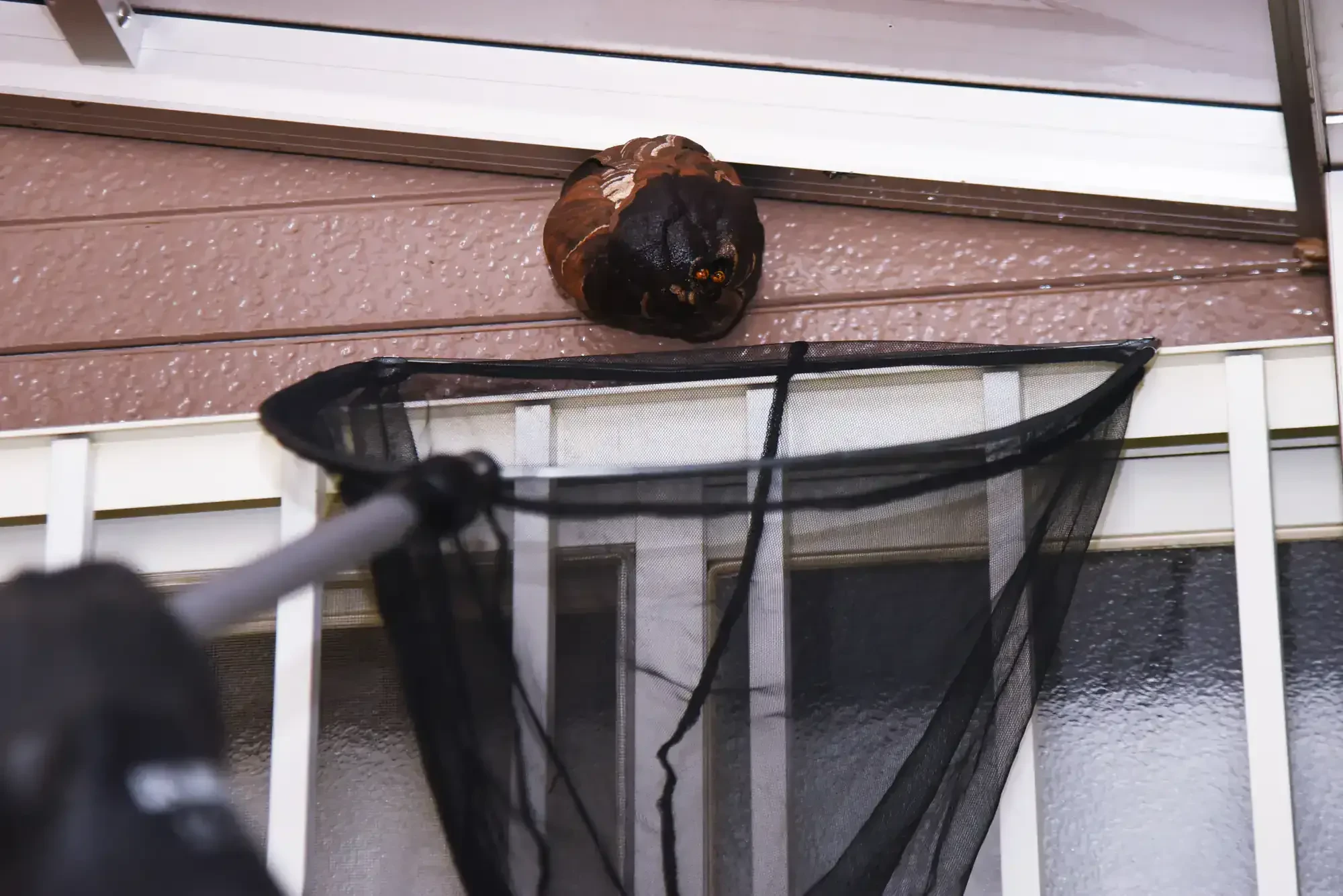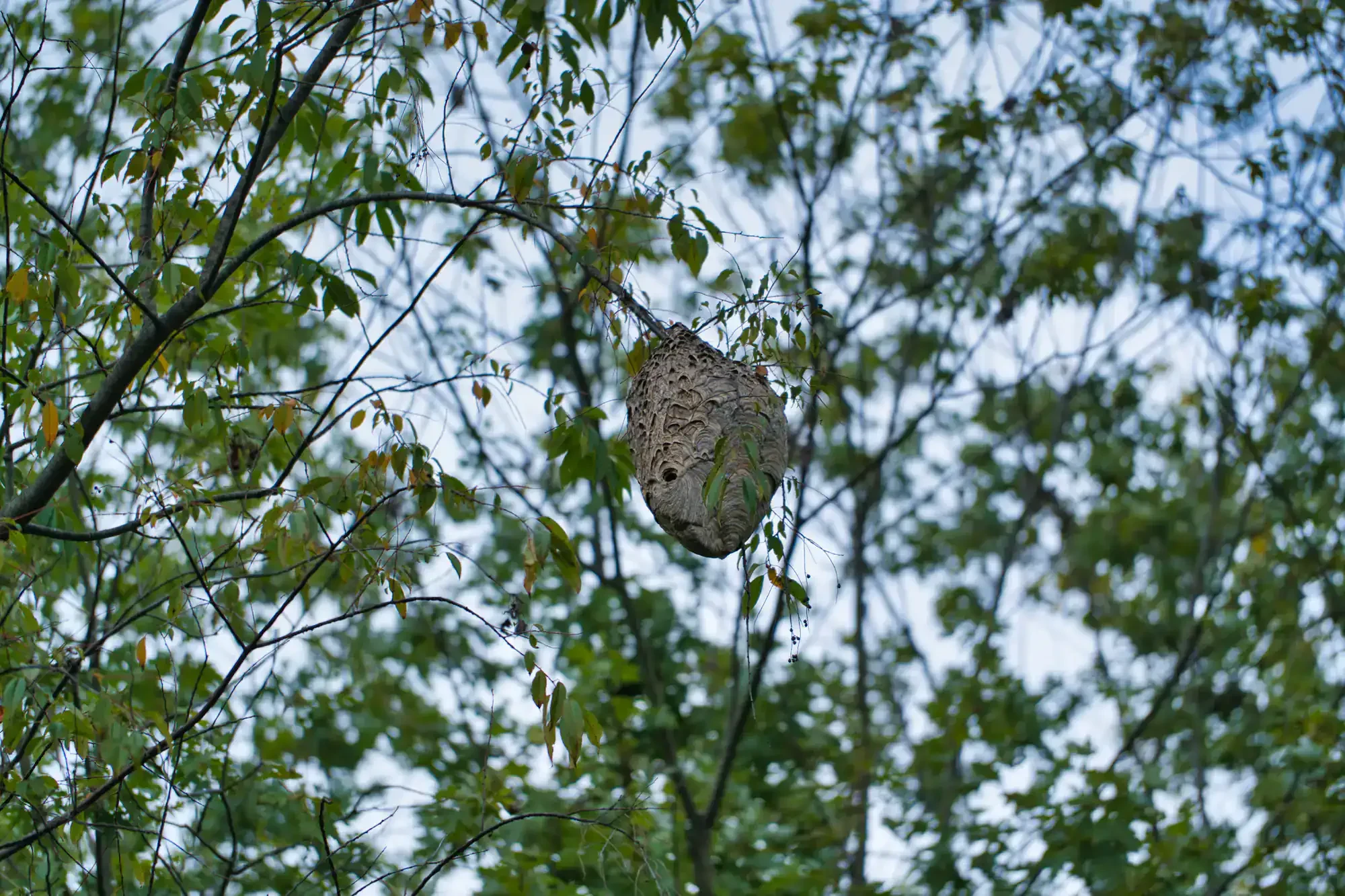
Hear from Our Customers

You’ll get your yard back. No more dodging angry yellow jackets around your deck, patio, or garden. No more worrying about your kids or pets getting stung multiple times.
We eliminate the entire colony—not just the workers you see flying around. That means the queen, the nest, and the threat are completely gone. You can host barbecues again, let your children play outside, and walk your property without constantly looking over your shoulder.
The difference is permanent removal, not temporary fixes. When we’re done, you won’t be dealing with the same problem next month.
First Choice Pest Control has been protecting Brighton families since 2005. Roger brings 26 years of hands-on experience to every yellow jacket problem—from simple ground nests to complex wall void infestations.
We’re the family-owned business that keeps the same technician on your account year after year. No rotating crews, no part-time college students. Just experienced professionals who know Brighton’s unique pest challenges and how yellow jackets behave in our Michigan climate.
Our integrated pest management training and Angie’s List recognition reflect our commitment to doing this work right. We serve both residential and commercial properties, and we offer discounts for seniors, veterans, and first responders because this community supports us.

First, we locate the nest. Yellow jackets in Brighton typically nest in two places: underground in old rodent burrows or inside wall voids, attics, and soffits. Finding the exact location is critical because incomplete treatment just makes them angrier.
Next, we treat the colony using professional-grade products that eliminate the entire population, including the queen. We use protective equipment and approach during optimal timing to avoid provoking a swarm response.
Finally, we remove the nest structure and seal entry points to prevent recolonization. For wall void nests, we never seal the opening until all wasps are dead—that would force them into your living space. We handle the cleanup and give you prevention recommendations to keep them from coming back.

Ready to get started?
Our yellow jacket extermination covers both ground-nesting Eastern yellow jackets and wall void-nesting German yellow jackets—the two species causing problems for Brighton homeowners. We handle nests in lawns, garden beds, soffits, attics, and even inside wall cavities where you might hear buzzing but can’t see the nest.
Brighton’s late summer season brings peak yellow jacket aggression as colonies reach thousands of workers. These aren’t the same wasps you dealt with in spring—they’re protecting a massive population and competing for dwindling food sources. That’s why August and September require professional intervention.
We treat nests up to 25 feet high and provide same-day service for urgent situations. Every treatment includes follow-up monitoring to ensure complete elimination. Our approach protects beneficial pollinators while targeting only the aggressive species threatening your property.

You’ll see consistent traffic of yellow jackets flying in and out of a specific area—either a small hole in the ground or a gap in your home’s exterior. Ground nests often look like a golf ball-sized opening in your lawn or garden bed with steady wasp activity.
For wall void nests, you might hear buzzing inside your walls or see wasps entering through small gaps around pipes, wiring, or soffits. If you’re seeing yellow jackets inside your home, the nest is likely in a wall cavity and they’re finding their way through cracks.
The key difference from other wasps is the volume of activity. Yellow jacket colonies can contain thousands of workers by late summer, so you’ll notice heavy, consistent traffic rather than just occasional sightings.
August and September are peak danger months for yellow jackets in Brighton. This is when colonies reach their maximum size—often 3,000 to 5,000 workers—and become most aggressive defending their nests.
During this period, yellow jackets also change their diet from hunting insects to seeking sugary foods, which brings them closer to human activity around patios, garbage cans, and outdoor eating areas. They’re more likely to sting with little provocation compared to earlier in the season.
The aggression continues until the first hard frost, typically in late October or November. If you’re dealing with yellow jackets during peak season, professional treatment is essential because DIY approaches often make the problem worse by agitating the massive colony.
Ground nests are built by Eastern yellow jackets in abandoned rodent burrows or natural cavities in your lawn or garden beds. You’ll see a small opening with steady wasp traffic, and the nest can extend several feet underground with multiple chambers.
Wall void nests are created by German yellow jackets inside your home’s structure—in attics, between walls, behind siding, or in soffits. These are often harder to detect until you hear buzzing or see wasps entering through small exterior gaps.
Wall void nests are generally more dangerous because if disturbed improperly, the wasps can chew through drywall and enter your living space. They also tend to be larger and more aggressive than ground nests. Both types require professional treatment, but wall void nests need specialized techniques to avoid forcing wasps into your home.
Never seal a yellow jacket nest opening while the colony is active. This is one of the most dangerous mistakes homeowners make, especially with wall void nests. When you block their normal exit, yellow jackets will chew through drywall, insulation, or siding to find another way out—often directly into your living space.
For ground nests, sealing the opening traps thousands of angry wasps underground, and they’ll find or create new exits, often in unexpected locations. This can spread the problem and make professional treatment much more difficult.
The correct approach is to eliminate the entire colony first using professional-grade treatments, then seal entry points only after confirming all wasps are dead. We handle this process safely with proper timing and protective equipment to avoid putting your family at risk.
Most yellow jacket nests can be eliminated within 24-48 hours of treatment, depending on the size and location. Ground nests typically show results faster because the treatment reaches the colony more directly.
Wall void nests may take slightly longer because we need to ensure the treatment reaches all areas of the nest structure inside your walls. We never consider the job complete until we’ve confirmed no wasp activity for at least 24 hours after treatment.
For emergency situations—like nests near children’s play areas or main entrances—we offer same-day service. The key is using the right products and application methods for complete colony elimination, not just killing the workers you can see flying around.
Yellow jacket colonies don’t reuse the same nest, but new queens may choose similar locations if the site offers good protection and access to food sources. Only new queens survive Michigan winters—all workers die by November.
However, if the original nest site isn’t properly sealed after treatment, it remains attractive to future queens looking for nesting spots in spring. This is why our service includes sealing entry points and exclusion work to prevent recolonization.
We also provide recommendations for eliminating conditions that attract yellow jackets, such as exposed garbage, pet food, or structural gaps. With proper treatment and prevention, you shouldn’t have problems in the same location, but new colonies can establish elsewhere on your property if conditions are right.